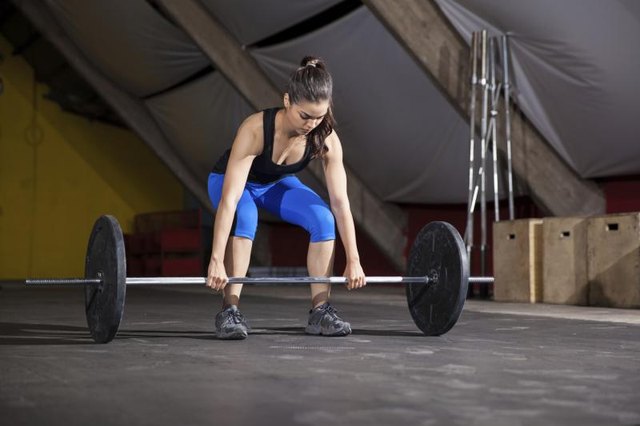Because of the amount of muscle each lift recruits, the deadlift and squat are two of the best measures of raw strength. In fact, they are two of the three lifts performed in powerlifting competitions. You might think of the deadlift as a squat in which you hold the barbell. Even the “Encyclopedia of Bodybuilding” makes the comparison. But they also emphasize that the squat and deadlift work your muscles differently — enough so that each deserves a place in your routine.
Thighs
Both exercises hit the thighs hard but in different ways. Because the deadlift requires such a deep bend at the hips, it is the single best glute and hamstring exercise. But it also recruits a lot of quadriceps activity. The squat, on the other hand, is considered by many, including eight-time Mr. Olympia Arnold Schwarzenegger, to be the single best quadriceps exercise. Because strict form requires the thighs to be parallel to the ground at the bottom of the movement, the squat hits the quadriceps very intensely. But a squat also works the hamstrings and glutes. This is part of the difficulty of fitting each lift into your routine. They are each exhausting for the thighs, and for the sake of your spine, you don’t want to perform either of them while exhausted.
Calves
Unlike the thighs, the calves are worked only by the squat. During a perfect deadlift, all the pressure should go through your heels. It is possible to lift the toes entirely from the ground. During a squat, however, the pressure is spread across the whole foot, which involves the calves in the exercise. Those with short calves, in fact, may need to perform squats on a squat block to keep the heels from rising off the ground as the calves flex. You’ll even see some powerlifters training squat in thick-heeled work boots!

Core
Contrary to popular belief, the core is trained better by deadlifts and squats than by ab-specific exercises. This was the finding of a study published in the January 2008 issue of the “Journal of Strength and Conditioning Research.” “Strength Training Anatomy” explains that this is because the body protects the spine through a process called abdominal blocking. The rib cage is expanded, every abdominal muscle is engaged, creating internal pressure, and the muscles of the lower back arch backwards. Although both the squat and the deadlift cause this effect, the deadlift does so more intensely due to more horizontal posture of the torso at the beginning of the movement and the fact that that posture is maintained as the legs straighten to allow the bar to clear the knees. This is why the deadlift is Arnold Schwarzenegger’s favorite lower-back exercise.
Upper Body
According to “Strength Training Anatomy,” the deadlift uses more muscles than any other single-movement lift. It beats the squat in this regard because during the squat, the bar is passively supported by the shoulders, while during the deadlift, the bar is actively held by the arms. This means that during a deadlift, the forearms and biceps are worked intensely. The deadlift is the heaviest trapezius exercise there is, working the lower traps and rhomboids at the bottom of the movement and the upper traps at the top. Once your deadlift gets really heavy, you’ll even feel your latissimus dorsi and teres major working almost as hard as they would during pullups.


